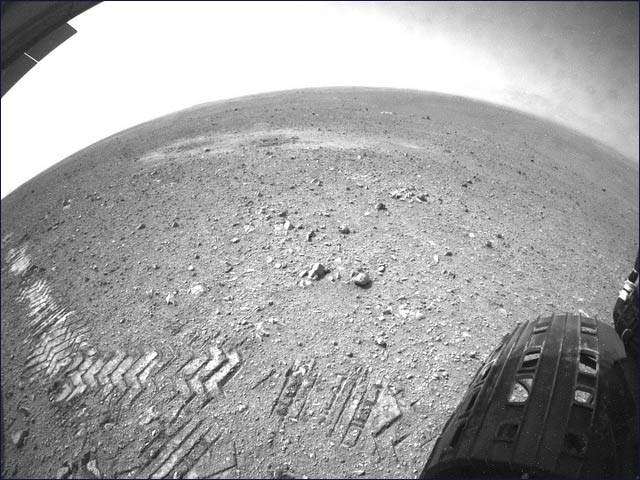By Avigayil Kadesh
A small Israeli-made cooler was among the instruments aboard the Curiosity rover on NASA’s Mars Science Laboratory, which lifted off from Florida on November 26, 2011.
In August 2012, after Curiosity landed on the Red Planet, a cheer arose from 170 workers at Ricor Cryogenic and Vacuum Systems, based in Kibbutz Ein Harod Ihud in northern Israel.
Many of the company’s cryocoolers, as these cryogenic refrigerators are called, have gone into outer space since the 1990s, but this was the first time Model K508 made it to Mars. The device is not for keeping drinks cold, but for maintaining sensitive instruments at a very low temperature.
“We knew the K508 would be part of a CheMin [chemical mineral] system in a space laboratory, but we didn’t know the mission name or the vehicle,” says Yoav Zur, Ricor’s marketing manager.
Seven years ago, a buyer from the Jet Propulsion Laboratory (JPL) in California – which manages US space agency assignments -- called Zur to inquire about a miniature cryogenic cooler for what was explained as a Mars mission. The Israeli machine was needed to keep the CheMin detector, critical to the analysis of the soil on Mars, chilled to minus 173 degrees Celsius.
“When we heard Curiosity had successfully landed, I called my contact at JPL and he confirmed they really used our cooler,” Zur says. “I asked him when results could be seen, and he said it could take some time. The CheMin lab has not started operating yet.” The Curiosity rover will be on Mars for two years and has several scientific experiments to accomplish.
Chosen for performance
In business since 1967, Ricor has been making cryogenic coolers since 1977. NASA and other space agencies have bought them for many different applications, Zur explains.
“Way back in 1994, our first model, K506, was launched in the Clementine program,” a NASA mission intended to test sensors and spacecraft components under extended exposure to the space environment.
“In 2001, we launched several cryocoolers in the European Space Agency’s Rosetta comet chaser, and later sold our products to the Brazilian Space Agency for a program having to do with weather control,” Zur adds.
Ricor cryocoolers were also aboard the MESSENGER discovery mission managed by Johns Hopkins University’s Applied Physics Laboratory, which orbited Mercury from March 2011 to March 2012.
“To help it measure surface gamma rays from long distances, MESSENGER uses the most sensitive detector available — a high-purity germanium semiconductor crystal,” a NASA statement explained.
“But while MESSENGER moves through one of the Solar System’s hottest environments, the crystal must operate at cryogenic temperatures. Instrument designers addressed this challenge by suspending the detector on thin Kevlar strings inside a high-tech thermos bottle, with a small, powerful refrigerator (cryocooler) that keeps temperatures at a frosty -183° C, or about -300° F.”

A close-up of track marks left by NASA's Curiosity rover to help it drive more accurately. Image courtesy of NASA/JPL-Caltech
“The normal use of our products is for cooling infrared detectors, which are used for thermal imaging,” Zur says. “It’s primarily a military product tested for very harsh conditions such as extreme temperature, radiation and vibration.”
Why do space agencies choose Israeli cryocoolers when other brands are available? “Ours are the smallest with the highest cooling power for the lowest price in the world,” says Zur. “Here the price was not the issue, but JPL chose our products for their performance and weight.”